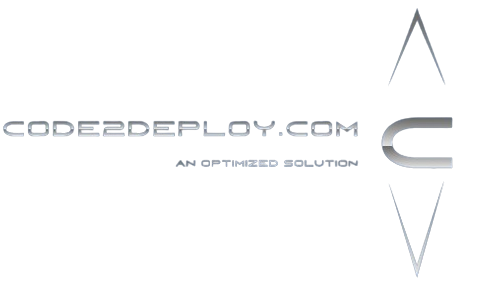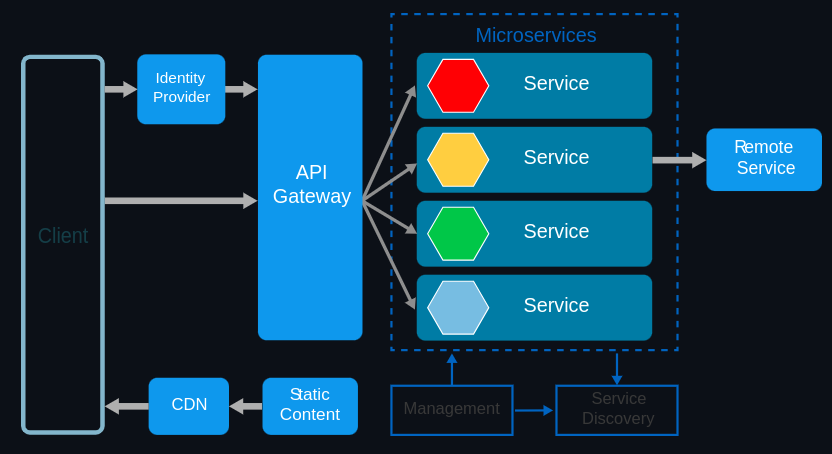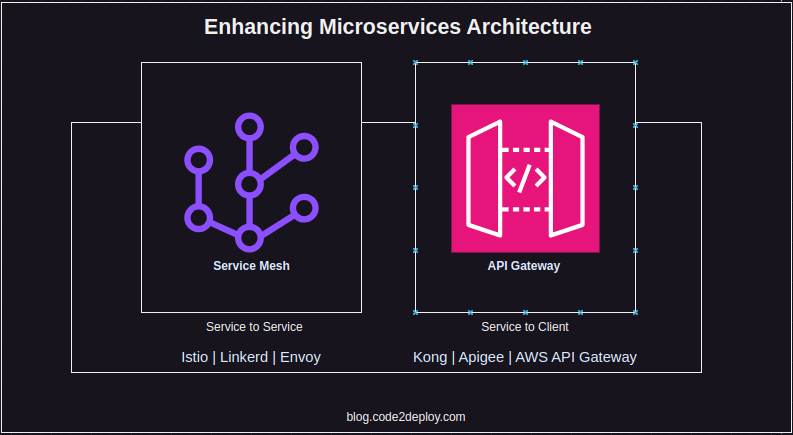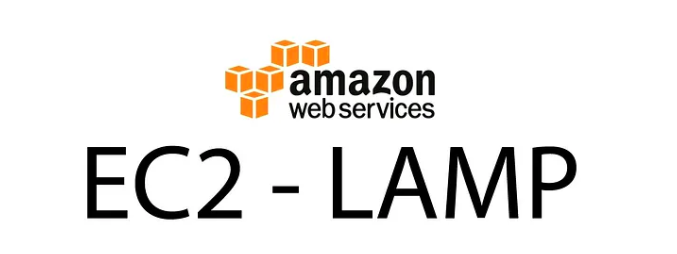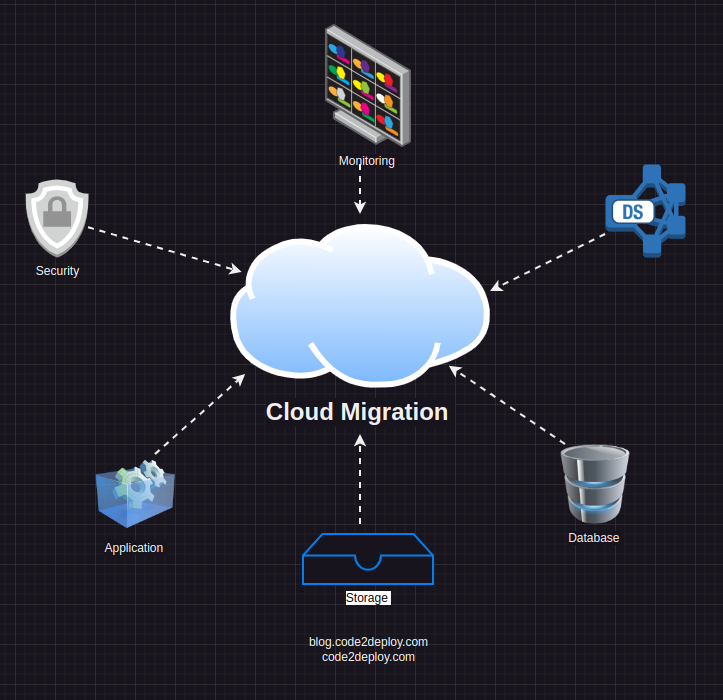In today’s fast-paced digital landscape, traditional monolithic architectures are increasingly giving way to more flexible and scalable solutions. Enter microservices—a paradigm shift in software architecture that offers a plethora of benefits for modern applications. Let’s delve into the world of microservices, exploring their principles, advantages, challenges, and real-world examples.
Understanding Microservices
Microservices, as the name suggests, are small, self-contained services that handle specific functions within an application. Unlike monolithic architectures, where an application is developed as a single unit, microservices break down complex systems into smaller, manageable components. Each microservice operates independently and communicates with others via well-defined APIs.
Principles of Microservices
- Decomposition: Applications are decomposed into smaller services based on business capabilities.
- Loose Coupling: Services are loosely coupled, meaning changes to one service don’t affect others.
- Independence: Each service can be developed, deployed, and scaled independently.
- Single Responsibility: Each service focuses on a specific function or business domain.
- Autonomy: Teams have autonomy over their services, including choice of technology stack.
Advantages of Microservices
- Scalability: Services can be scaled independently, allowing for efficient resource utilization.
- Flexibility: Different services can be developed using different technologies to fit specific needs.
- Agility: Faster development cycles and quicker time-to-market due to independent deployments.
- Resilience: Fault isolation ensures that failures in one service don’t bring down the entire system.
- Easy Maintenance: Easier to understand, update, and maintain due to smaller codebases.
Challenges of Microservices
- Distributed Complexity: Managing multiple services introduces complexities in deployment and orchestration.
- Inter-service Communication: Increased communication overhead between services can impact performance.
- Data Management: Data consistency and transaction management become more challenging in distributed systems.
- Operational Overhead: Requires robust infrastructure and tooling for deployment, monitoring, and debugging.
- Cultural Shift: Requires a shift in organizational culture towards DevOps and cross-functional teams.
Real-World Examples
- Netflix: Netflix transitioned from a monolithic architecture to microservices to handle their massive scale and diverse user base. Each microservice at Netflix is responsible for a specific function, such as recommendation, billing, or content delivery.
- Uber: Uber’s platform relies on microservices for various functions, including ride booking, payment processing, and driver management. This architecture allows Uber to scale rapidly while maintaining a seamless user experience.
- Amazon: Amazon’s e-commerce platform is built on a microservices architecture, enabling independent teams to innovate and deploy new features quickly. Services like product catalog, payment processing, and recommendation engine operate autonomously, ensuring high availability and scalability.
Microservices offer a compelling approach to building modern, scalable, and resilient applications. While they come with their set of challenges, the benefits they provide in terms of agility, scalability, and maintainability make them a popular choice for organizations across industries. By embracing microservices, businesses can adapt to changing market demands and deliver innovative solutions to their users with greater efficiency and reliability.
In the ever-evolving landscape of software development, microservices stand as a testament to the power of modular, decentralized architectures in driving digital transformation and shaping the future of technology.
Contrasting microservices with monolithic applications provides insights into their fundamental differences in architecture, development approach, and scalability.
Monolithic Application:
- Architecture:
- Monolithic applications are built as a single, cohesive unit where all components are tightly integrated.
- Components such as the user interface, business logic, and data access layers are typically bundled together.
- Development:
- Development is centralized, with developers working on different parts of the application within the same codebase.
- Scaling the application involves replicating the entire codebase, including components that might not require scaling.
- Deployment:
- Monolithic applications are deployed as a single unit, often requiring downtime during updates or deployments.
- Deployments are typically infrequent due to the complexity and risk associated with making changes to a large codebase.
- Scalability:
- Scaling a monolithic application involves replicating the entire application, which can be inefficient if only certain components require scaling.
- Vertical scaling (adding more resources to a single instance) is common, which might have limitations in terms of cost and performance.
Microservices:
- Architecture:
- Microservices architecture breaks down an application into smaller, independent services, each responsible for a specific function or feature.
- Services communicate with each other through well-defined APIs, often using lightweight protocols like HTTP or messaging queues.
- Development:
- Development is decentralized, with teams responsible for individual microservices working autonomously.
- Each microservice can be developed using different technologies, languages, or frameworks, based on the specific requirements.
- Deployment:
- Microservices can be deployed independently of each other, allowing for continuous deployment and updates without affecting other services.
- Deployment processes are typically automated, enabling rapid and frequent releases.
- Scalability:
- Microservices enable granular scalability, where only specific services or components that require scaling can be scaled independently.
- Horizontal scaling (adding more instances of a service) is common, allowing for efficient resource utilization and cost-effectiveness.
Key Differences:
- Flexibility: Microservices offer greater flexibility in technology choices, development processes, and scalability compared to monolithic applications.
- Scalability: Microservices allow for granular scalability, where only necessary components can be scaled independently, while monolithic applications often require scaling the entire application.
- Deployment: Microservices support continuous deployment and independent releases, whereas monolithic applications typically require downtime during updates.
- Development Approach: Microservices promote decentralized development and autonomy among teams, whereas monolithic applications involve centralized development within a single codebase.
In summary, while monolithic applications offer simplicity in development and deployment, microservices provide greater flexibility, scalability, and resilience, making them well-suited for modern, cloud-native applications in dynamic and rapidly evolving environments.
